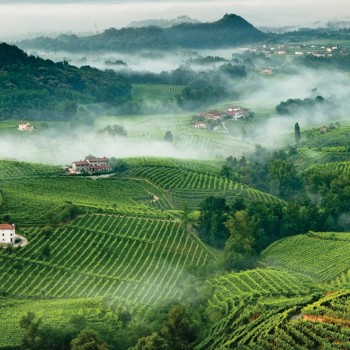Date£º
2016-05-06 10:29 Source£º
thedrinksbusiness Author:
Lauren Eads Translator:
The Consorzio di Tutela Prosecco DOC has confirmed that it will be allocating a further 3,000 hectares of vines to growers within the Prosecco DOC to meet continued demand for the Italian sparkler over the next three years.

Prosecco-Village
The Prosecco DOC Consortium has said there will be no risk of a Prosecco shortage this year, following a record 2015 harvest.
Speaking to the drinks business at the London Wine Fair yesterday, Luca Giavi, the director general of the Prosecco DOC Consortium, was adamant that there would be no risk of a Prosecco shortage this year, following fears that stocks would run dry last year following the 2014 harvest.
While the Prosecco DOCG area of Valdobbiadene escaped the 2014 harvest relatively unscathed, grapes grown in the DOC flatlands had a worse time of it, with overall production down 10% less than forecast. It left some producers warning of the ¡°very real possibility of a global shortage¡±.
That is unlikely to be the case this year, with official figures released by the organisation this week confirming a record 2015 harvest, with the DOC reporting a jump of more than 50% in the volume of DOC Prosecco produced compared to 2014.
¡°2015 was a record harvest for Prosecco DOC, and more than enough bottles will be produced to deal with the demand in the UK,¡± said Giavi.
¡°Prosecco is a product of the land and so it will always be subject to Mother Nature but given the changeable climate throughout 2015, the numbers are very encouraging¡±, added Stefano Zanette, president of the Consortium. ¡°We¡¯re estimating being able to produce 450 million bottles of wine from the harvest, which is an additional 144 million from the previous year.
¡°The consortium is working hard, alongside our producers, to grow our markets globally and we warmly welcome increased demand. Since receiving DOC status, we¡¯ve been able to increase volumes consistently every year, fulfilling the growing appetite from consumers for our wines.¡°
To ensure it is able to meet future demand, the DOC Consortium also confirmed that it will be increasing DOC vineyards within the region by 3,000 hectares, assigning the region¡¯s 10,000 winegrowers around two hectares each over the next three years.
This will see the limit of hectares of vines for the production of Prosecco DOC rise from 20,000 to 23,000. This, said Giavi, would enable production to increase by around 10 to 15% over the next three years, with the consortium already forecasting production growth of 15 to 20% for the 2016 harvest.
Efforts by the Prosecco DOC to ensure the region can keep up with demand will be welcome news to the UK market, where Prosecco consumption increased by 48% between 2014 and 2015. Brits currently buy one in every five bottles of DOC Prosecco produced, making the UK the leading export market.

Luca Giavi, director general of the Prosecco DOC Consortium
Together with the USA and Germany, the three regions claim three quarters of all the Prosecco produced annually. 70% of Prosecco is exported (of this 70%, the UK market take 35%), with 30% staying in Italy.
The consortium is made up of 356 sparkling wine producers and was set up in 2009 to safeguard the quality of the wine being produced, while developing and promoting the product globally.
Recently the DOC has locked horns Australian winemaker Larry Cherubino who last year launched his own Australian ¡°Prosecco¡±. Named Carte Blanc, Cherubino told db that he was legally able to call the sparkler a Prosecco, despite it not coming from the northern Italian region, because Prosecco is recognised as a grape variety, not a region, in Australia.
Prosecco is made from the Glera grape, which until 2009 was also known as Prosecco. To avoid confusion between the grape and the protected designation of origin having the same name, the variety was renamed Glera. The change was intended to prevent people from using the name Prosecco for wines produced outside of the region.